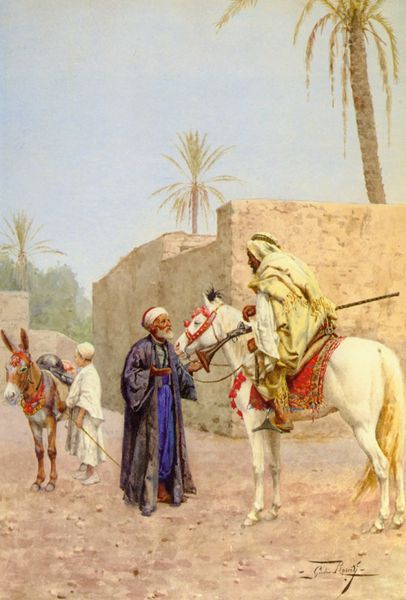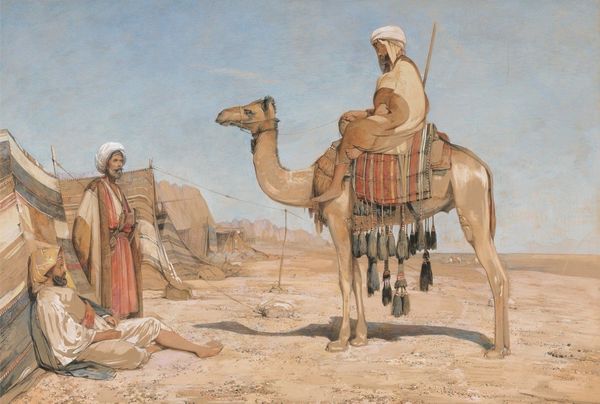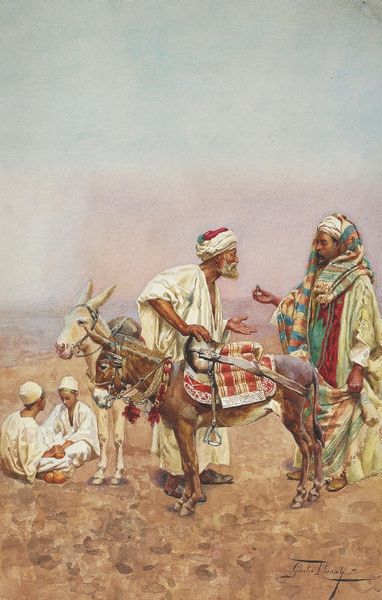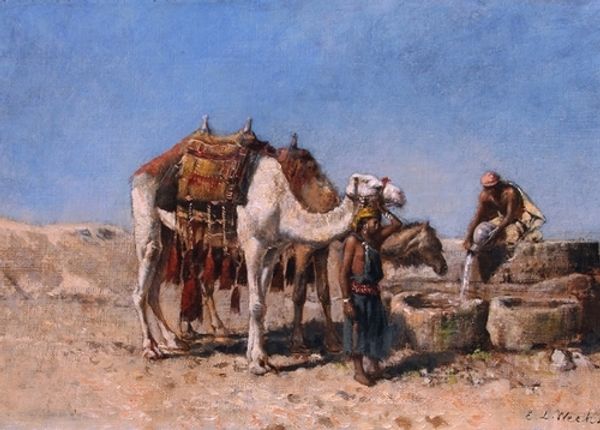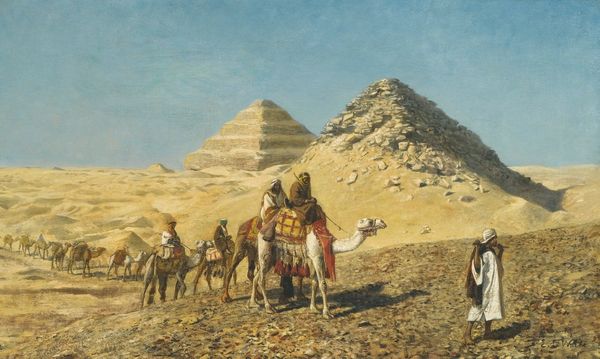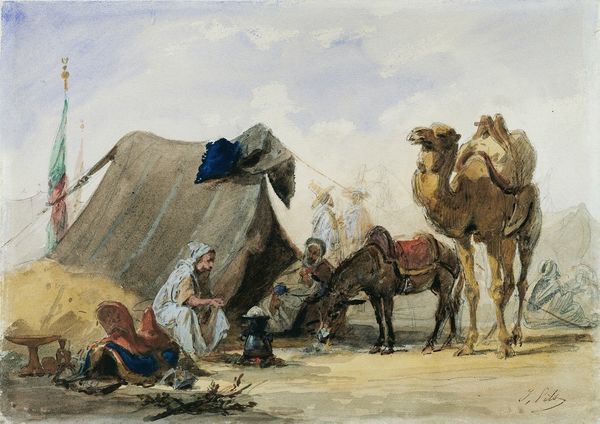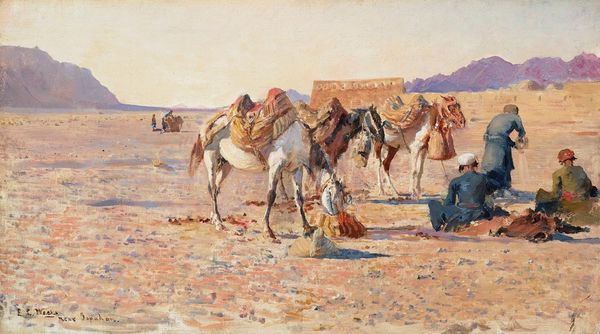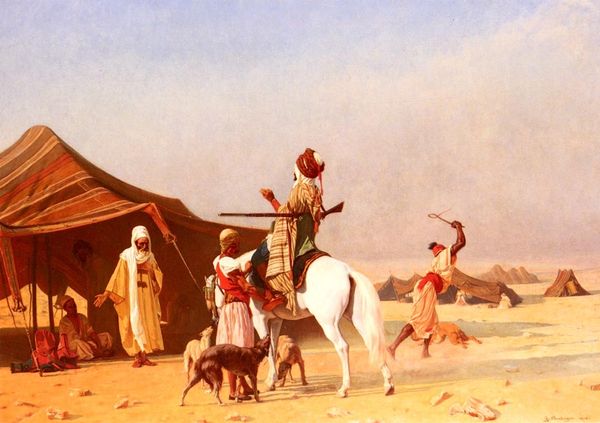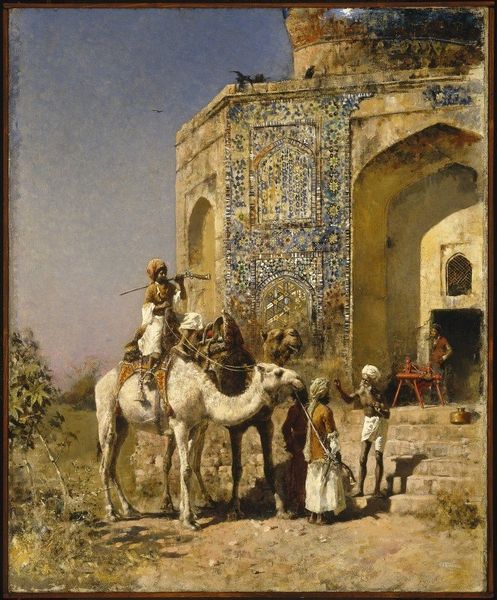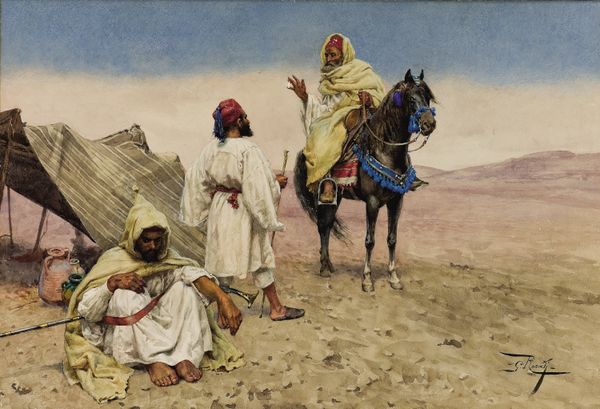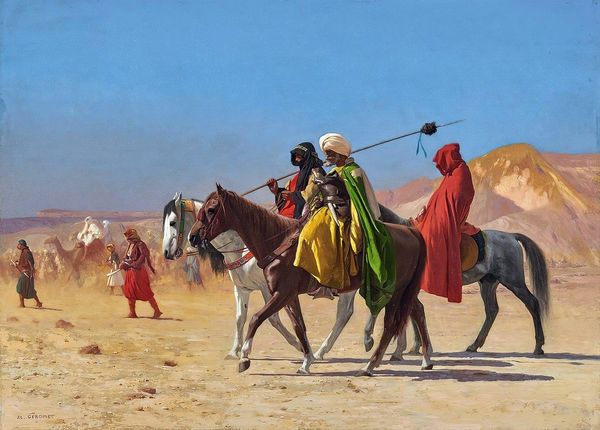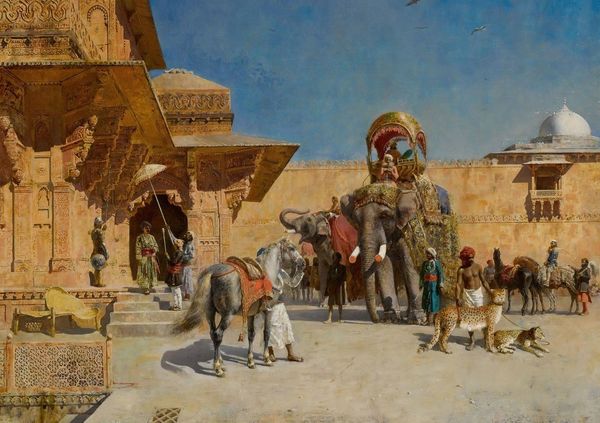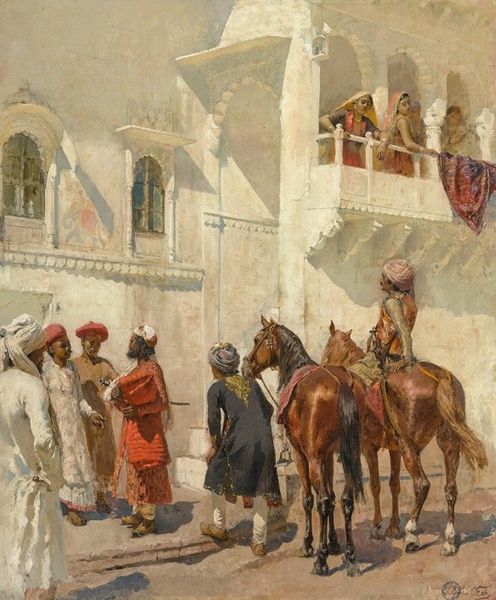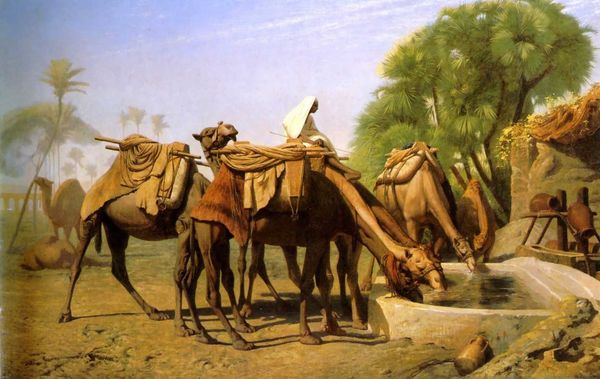
gouache, watercolor
#
gouache
#
figurative
#
gouache
#
landscape
#
figuration
#
watercolor
#
coloured pencil
#
orientalism
#
watercolour illustration
#
watercolor
Copyright: Public Domain: Artvee
Editor: Here we have "Halt In The Desert," possibly by John Frederick Lewis, created with gouache and watercolor. It gives a serene, almost dreamy feeling, doesn't it? How do you interpret the symbols in this scene? Curator: The symbols present are potent carriers of meaning. Consider the camel itself – a symbol of endurance, resilience, survival. What emotional weight does its depiction here carry, do you think? Editor: A sense of patient strength, maybe? There's also the desert, vast and seemingly empty, but teeming with hidden life and ancient stories. Curator: Exactly. The desert, an archetype representing challenge, spiritual journey, even purification. The figures themselves, their dress, their positioning... They're not just individuals, but representatives of a culture, of shared beliefs and histories. How might their stillness impact the scene? Editor: It's as if they're pausing to reflect, to consider their place within that history, within the immensity of the desert. It’s less about physical movement and more about inner contemplation. Curator: Precisely. This stillness connects us to a timeless quality. Lewis invites us to ponder cultural memory, the stories etched within this landscape and its inhabitants. Editor: So the artwork is less about depicting a literal scene and more about evoking feelings and cultural understandings tied to it. It invites us to reflect. Curator: Absolutely. The image invites a space for understanding these cultures while engaging with symbols central to human experience. Editor: That really makes me think about the power of symbols to transcend time. Thanks for sharing your perspective! Curator: My pleasure. Visual symbols act as touchstones, linking past and present in profound ways.
Comments
No comments
Be the first to comment and join the conversation on the ultimate creative platform.
